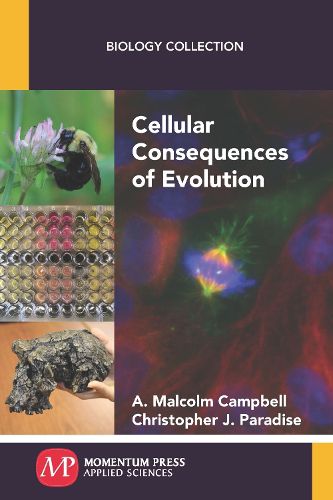Readings Newsletter
Become a Readings Member to make your shopping experience even easier.
Sign in or sign up for free!
You’re not far away from qualifying for FREE standard shipping within Australia
You’ve qualified for FREE standard shipping within Australia
The cart is loading…






This title is printed to order. This book may have been self-published. If so, we cannot guarantee the quality of the content. In the main most books will have gone through the editing process however some may not. We therefore suggest that you be aware of this before ordering this book. If in doubt check either the author or publisher’s details as we are unable to accept any returns unless they are faulty. Please contact us if you have any questions.
Once the first cell arose on Earth, how did genetic diversity arise if DNA replication and cell division generate exact copies? The answer is that neither process is perfect and that changes do occur at each step. Some changes are small and subtle while others are large and dramatic. As DNA mutates, evolution of a population takes place. But when can someone determine if a single species has changed enough to be considered two separate species? How is a species defined and is this definition useful in the real world? Real biological data will be examined to confront and an-swer these questions. Finally, the book examines an example of evolution that takes place in humans on a regular basis-the mammalian immune system. White blood cells evolve rapidly to confront any substance that enters a body and is perceived as a threat. With each exposure, these cells get better and better at neutralizing the threat.
$9.00 standard shipping within Australia
FREE standard shipping within Australia for orders over $100.00
Express & International shipping calculated at checkout
Stock availability can be subject to change without notice. We recommend calling the shop or contacting our online team to check availability of low stock items. Please see our Shopping Online page for more details.
This title is printed to order. This book may have been self-published. If so, we cannot guarantee the quality of the content. In the main most books will have gone through the editing process however some may not. We therefore suggest that you be aware of this before ordering this book. If in doubt check either the author or publisher’s details as we are unable to accept any returns unless they are faulty. Please contact us if you have any questions.
Once the first cell arose on Earth, how did genetic diversity arise if DNA replication and cell division generate exact copies? The answer is that neither process is perfect and that changes do occur at each step. Some changes are small and subtle while others are large and dramatic. As DNA mutates, evolution of a population takes place. But when can someone determine if a single species has changed enough to be considered two separate species? How is a species defined and is this definition useful in the real world? Real biological data will be examined to confront and an-swer these questions. Finally, the book examines an example of evolution that takes place in humans on a regular basis-the mammalian immune system. White blood cells evolve rapidly to confront any substance that enters a body and is perceived as a threat. With each exposure, these cells get better and better at neutralizing the threat.